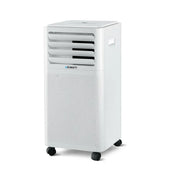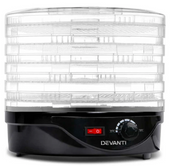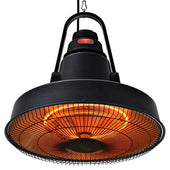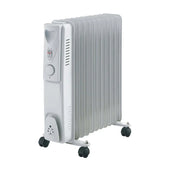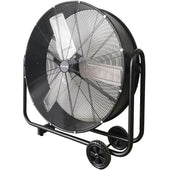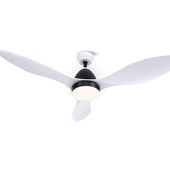Understanding Mattress Sizes: Double vs. Queen
When comparing double and queen mattress sizes, it helps to understand their dimensions and intended uses. A standard double mattress, often referred to as a full-size mattress, measures 137 cm wide by 190 cm long. In contrast, a queen-size mattress offers more space, with dimensions of 152 cm wide by 203 cm long.
While a double mattress comfortably fits one sleeper or two individuals with limited space, a queen is suited for couples, offering more personal room. Both sizes are popular in homes, but queen mattresses often suit larger bedrooms, whereas doubles work well in smaller spaces, including guest rooms or apartments.
Dimensions Comparison: What Are the Key Differences?
A double mattress, also known as a full mattress, typically measures 135 cm wide and 190 cm long. In contrast, a queen mattress offers additional space, measuring around 150 cm wide and 200 cm long. This size difference translates to extra comfort for individuals or couples who value more room to move.
- Width Difference: A queen mattress is 15 cm wider than a double, providing additional space per person when sharing the bed.
- Length Difference: Queen mattresses are 10 cm longer, accommodating taller individuals more comfortably.
The increased dimensions make a queen a popular choice for master bedrooms, while doubles suit smaller rooms or solo sleepers seeking affordability.
Room Size Considerations: Finding the Perfect Fit
When deciding between a double and a queen mattress, room dimensions play a crucial role. A double mattress, measuring 135 cm by 190 cm, suits compact spaces such as guest rooms or smaller bedrooms. It provides ample comfort without overwhelming limited floor space. Conversely, During Days, a queen mattress, at 152 cm by 203 cm, is ideal for master bedrooms where space is less restrictive.
Ensure there is sufficient clearance around the bed for furniture, movement, and other essentials. Designers recommend leaving at least 60-90 cm of walking space around the mattress. Larger rooms benefit from the extra luxury of a queen size, while limited spaces thrive on a double’s practicality.
Sleeping Arrangements: Solo vs. Couple Comfort
When it comes to solo sleepers, a double mattress provides sufficient space to stretch out comfortably while still fitting well in smaller bedrooms. Its compact size makes it an ideal choice for guest rooms or single individuals who prefer space efficiency.
For couples, however, the difference becomes more pronounced. A queen mattress is wider and longer than a double, offering extra room for two people to sleep without feeling cramped. It reduces the likelihood of disturbed sleep caused by movement or limited personal space.
Couples should also consider their sleeping styles, as side-to-side tossers or starfish sprawlers may benefit more from the added room a queen provides.
Budget Breakdown: Cost Differences Between Double and Queen
When comparing double and queen mattresses, price emerges as a significant consideration. Generally, double mattresses are more affordable, catering to budget-conscious shoppers. The smaller dimensions result in less material usage, which directly impacts manufacturing costs. Queen mattresses, being larger, typically cost more due to increased materials and construction requirements.
Common cost differences include:
- Double mattresses: £150–£800, depending on brand, material, and features.
- Queen mattresses: £250–£1,200 or higher, especially for luxury models.
Premium options, like memory foam or hybrid types, amplify the cost gap. Accessories, such as bed frames and linens, also tend to be pricier for queen-sized models. Shoppers should weigh these factors alongside their needs and budget.
Mattress Weight and Handling: Is Size an Issue?
The weight of a mattress is an important factor, especially when it comes to moving or rotating it for maintenance. Double mattresses are generally lighter than queen mattresses due to their smaller size. This makes double mattresses easier to handle, particularly for single individuals or those with limited mobility.
Queen mattresses, on the other hand, are bulkier and heavier, which can pose challenges during transport or adjustments. Typically, queen mattresses may require two people for easier handling.
Additional considerations include the type of mattress material, as memory foam tends to be heavier than traditional innerspring options, impacting your handling requirements regardless of size.
Guest Room vs. Master Bedroom: Which Mattress Works Best?
Choosing between a double and queen mattress depends on the intended use and room size.
Guest Room:
- A double mattress is often ideal for guest rooms due to its space-saving dimensions.
- Measuring approximately 135 cm by 190 cm, it comfortably sleeps one or two guests without overwhelming smaller bedrooms.
- Practical for short-term stays, it balances comfort and functionality.
Master Bedroom:
- A queen mattress, with dimensions around 152 cm by 203 cm, provides a more expansive sleeping surface.
- Perfect for couples, it enhances comfort during nightly use and suits larger master bedrooms.
Both choices depend on balancing sleeping needs, space, and practicality.
Lifestyle Factors: Age, Body Size, and Sleeping Position
When deciding between a double and a queen mattress, the sleepers’ age can play a pivotal role. Teenagers or young adults may find a double mattress sufficient, while older adults often prefer the additional space provided by a queen. Body size is another key consideration. Individuals of larger stature typically require the extra width and length of a queen mattress to sleep comfortably.
Sleeping positions also influence the choice. Side sleepers and those who toss and turn benefit from the queen's roomier dimensions. By contrast, single back or stomach sleepers may feel adequately supported on a double. These factors help tailor the best choice to individual needs.
Accessories and Bedding: Compatibility with Double and Queen
Selecting accessories and bedding for double and queen mattresses requires careful consideration due to size differences. Standard double mattresses, measuring approximately 135 cm by 190 cm, need bedding explicitly designed for their dimensions to ensure a snug fit. On the other hand, queen mattresses, slightly larger at 152 cm by 203 cm, require appropriately sized sheets, duvet covers, and mattress protectors to prevent undersized or oversized issues.
When it comes to bed frames, headboards, and mattress toppers, compatibility depends on matching the exact size of the chosen mattress. Accessories designed exclusively for a queen may not fit a double mattress correctly.
Making the Decision: Tips for Choosing the Right Size
When selecting between a double and a queen mattress, several factors come into play.
- Measure the Bedroom Space: Opt for a mattress size that leaves ample room for movement and additional furniture. A queen mattress suits larger bedrooms, while a double mattress fits snugly in compact spaces.
- Consider Sleeping Habits: For individuals who toss and turn or share a bed with a restless sleeper, the extra width of a queen mattress can offer more personal space.
- Factor in Height: Taller people may find a queen mattress more accommodating due to its extra length.
- Budget Evaluation: Double mattresses typically cost less, making them ideal for budget-conscious shoppers.
Balancing these considerations ensures a decision suited to both lifestyle and physical space.












